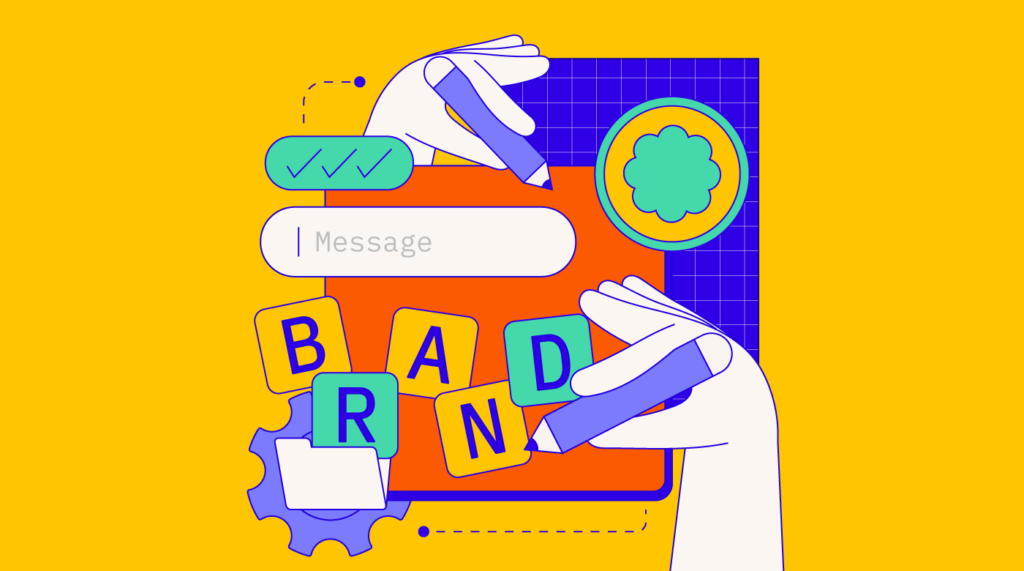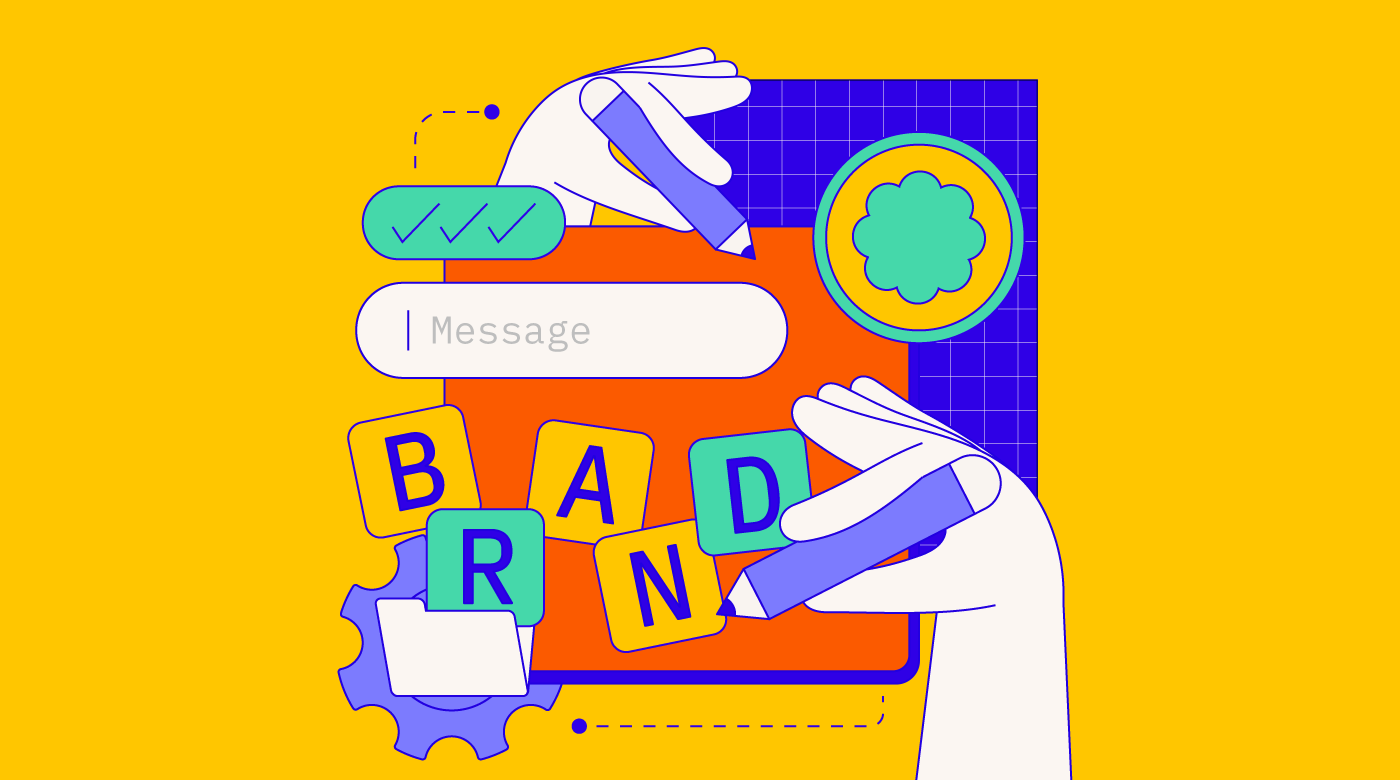We’re living in an era some marketers call “The Age of Cynicism.” Only 47% of brands are seen as trustworthy, and consumers say 75% of the world’s brands could be easily replaced if they disappeared tomorrow.
In this environment, writing a brand promise can feel like a tribute to a bygone era. Promises require trust, and trust in brands is in increasingly short supply.
Brand promises, however, are more impactful than ever.
By identifying a brand promise that aligns with your audience’s needs, values, and expectations, you have a unique chance to differentiate your brand and build trust—as long as you deliver on that brand promise over and over again.
What Is A Brand Promise?
A brand promise is a short statement that communicates your brand’s value and the experience customers can expect. Unlike a tagline or slogan, a brand promise is usually unadvertised; you’re more likely to find it buried on a company’s About page than prominently featured in marketing materials.
While you can (and should) write a formal brand promise, the magic isn’t in the writing. It’s in the execution. An effective brand promise is communicated to customers not via press releases, but through the everyday interactions they have with your brand. That means for a brand promise to have its intended impact, your entire company needs to be aligned on the brand experience customers expect.
If you don’t articulate your brand promise, customers will naturally form their own. Based on their experiences with your brand, customers create “psychological contracts” that are the basis for an assumed brand promise.
There are three forms a brand promise can take, which I’ll describe as “internal,” “public,” and “assumed”:
- Internal Brand Promise: Most brand promises are intended primarily for internal use. Their role is to keep employees (especially customer-facing employees) aligned so that the organization stays focused on giving customers an experience that’s aligned with the promise.
- Public Brand Promise: Occasionally you can find public brand promises, most commonly when an organization’s tagline is also effectively its brand promise. Zappos, for example, uses the tagline “Delivering happiness” which attracts the brand’s ideal audience while also serving as its brand promise.
- Assumed Brand Promise: Even if you don’t come up with a brand promise, your customers will assume one based on all of the interactions that make up your brand experience. (And here’s the tough part: it might not be the impression you want to leave).
Do All SaaS Companies Need A Brand Promise?
According to a Gallup survey of 18 million people, only 50% of customers think that the companies they do business with always deliver on their promises.
That means creating a brand promise (and delivering on it, too) puts you in rare company. It helps customers build trust in your brand, generating greater engagement, higher profitability, more revenue, and faster growth.

The highest-performing companies deliver on their brand promise at least 75% of the time. Delivering on your brand promise will attract your ideal customers, give focus to your organization, and cultivate a shared brand purpose and a greater sense of community.
All SaaS companies should have a brand promise. That said, there are some nuances specific to SaaS startups and larger SaaS companies:
- Startups: Early stage SaaS startups are focused on customers, revenue, and building the product—and they might not even have full validation of their product-market fit yet. If this is true for your brand, it might be premature to roll out a brand promise. Instead, wait until you’re clear on who your audience is, how they see your brand, and what they expect.
- Large Companies: Companies with multiple SaaS brands in their portfolio can struggle to find a brand promise that fits all of them in an authentic and relevant way, without being vague. Instead, consider individual brand promises for each sub-brand, or even for specific applications.
Conducting Brand Promise Research
Designing your brand promise starts with identifying what your customers want, understanding the impact of your brand promise on the customer experience, and differentiating your brand.
Identify What Your Customers Want
If you don’t go into the brand promise process with a plan, it can feel overwhelming. But here’s the good news: you don’t have to dream up a brand promise from scratch. In reality, you’ll cobble it together from the impressions customers already have about you, together with anything you want to highlight about your brand’s values, positioning, and character.
This is where interviewing customers and conducting surveys is important. You can also talk to customer-facing reps on your team, who have a good sense from their interactions with customers.
Positive customer perceptions that align with your values will be important when writing your brand promise. You may also find that the way customers see you isn’t the way you want to be seen. If that’s the case, a brand promise that aligns your organization to a new way of being can help shift your organization closer to your values—and to what customers want.
Understand How Your Brand Promise Impacts CX
Customers want a brand experience that reinforces the reason they chose your brand in the first place. By starting with your company’s brand promise and working outwards—and ensuring everything else in the customer experience is aligned—you can give customers the consistent experience they want.
A strong brand promise impacts CX by:
- Setting customer expectations
- Building trust and predictability
- Attracting your ideal customers
- Differentiating you from competitors
- Creating affinity between your values and customers’ values
- Generating loyalty with customers and encouraging advocacy
- Informing your design, since it will be consistent with your brand promise
Explore How to Differentiate Your Brand
If your brand promise is basically the same as competitors’ brand promises, it’s an admission that your brand—and the value you provide—is a commodity.
Think of the exercise of writing your brand promise as a chance to hone your positioning. Review what other brands are doing, and explore areas where you have a unique advantage. Combined with the results from any customer surveys and interviews you’ve conducted, this will help you create a brand promise that stands out.
How To Write A Compelling SaaS Brand Promise
Vague, boring phrases make terrible brand promises. Unfortunately, these are all too common; some brands end up with meaningless platitudes like “We’re all in this together.”
Another common trap is getting stuck on how your brand might evolve in the future. Fortunately, you don’t need to align your brand promise with an imagined future version of your brand. Just think about what you can realistically and authentically deliver to customers today.
Remember, customers already have an idea of what they think about your brand and what it means to them. Rather than starting from scratch, build on that.
Here are some things to keep in mind when writing your brand promise.
- It should capture your brand essence, brand identity, and brand positioning.
- It should include a blend of emotional and benefit-focused elements.
- It states clear benefits. (If your brand promise doesn’t have clear benefits, it may be too vague.)
- It feels authentic.
- You can deliver on the promise.
A 5-Step Process for Writing Your Brand Promise
Once you’ve completed your brand promise research, you’re ready to write your brand promise. Here’s how to do it:
- Synthesize: You should now have access to data from customer interviews, conversations with your frontline reps, and surveys. Pull all of this into a few core brand pillars or attributes. Cross out anything that doesn’t feel aligned with your mission statement or values.
- Brainstorm: Dream up a variety of phrases that capture the spirit of your brand differentiators, value proposition, and what customers expect from your brand. Use a mix of emotional language and benefit-focused commitments.
- Review: You should now have a handful of possible candidates for your brand promise. Test them internally to see if they feel authentic. Most importantly, ask stakeholders if they can deliver on the promise. Make sure you have buy-in before moving forward. If you can’t deliver, remove that brand promise option.
- Refine: By now, you’ve whittled down your brand promise to a near-final state. But does it resonate with customers? Find a way to get your brand promise in front of customers. Collect feedback and refine until you have language that aligns strongly with your target audience.
- Finalize: Finalize your brand promise into a short, memorable statement.
Examples Of Powerful SaaS Brand Promises
To give you some inspiration, let's look at examples of brand promises from leading SaaS companies.
ServiceNow
Brand Promise: “To make the world work for our customers and their customers.”
Impact: ServiceNow is a cloud computing platform that helps enterprise brands digitize and automate their workflows. Their brand promise is powerful because it’s inherently empathetic; it tells customers that ServiceNow cares enough to make sure their customers’ end consumers have an excellent experience.
Ceridian
Brand Promise: “Make work life better.”
Impact: It’s not always easy to find a brand promise that resonates not only with customers but with staff. Ceridian, a cloud-based software company, threads that needle nicely with “Make work life better,” a brand promise that doubles as a core value—and works for HR recruiting efforts, too.
Freshworks
Brand Promise: “Delivering 'Customer-For-Life Software’.”
Impact: Freshworks, a customer service software company, creates SaaS products that cover multiple marketing, sales, support, and IT functions. Although it’s a large portfolio of products, they sum it up with the phrase “Delivering customer-for-life software,” which is echoed by their mission of helping customers acquire and retain customers for life.
Signeasy
Brand Promise: “To bring ease and simplicity to all our customers, wherever they are.”
Impact: Signeasy, as the name suggests, is all about making life simple for its customers. The SaaS platform—which allows users to electronically sign documents—found that its original branding (”SignEasy, with a capital E”) was adding confusion when customers tried to spell it. So in an effort to adhere to its brand promise, Signeasy changed its logo and branding to align with what was easiest for customers.
BambooHR
Brand Promise: “We help you make time for meaningful work.”
Impact: BambooHR’s tagline, “Setting people free to do great work,” reinforces its brand promise and elevates its product from cloud HR software to something more meaningful. BambooHR makes good on their brand promise by releasing regular time-saving updates to its product.
Activating Your Brand Promise
Once you’ve settled on a brand promise that feels authentic, don’t neglect the most important part—rolling it out across your organization. Your brand promise succeeds or fails based on your ability to deliver on it every day. Train your customer-facing teams to deliver; given their many touchpoints with your customers, they will be influential in bringing your brand promise to fruition.
Today’s consumers are jaded. They’ve been failed by other brands that haven’t met their expectations. Crafting an impactful brand promise—and delivering on it consistently—is what will set your brand apart, build trust, and create more brand value than ever.
Ready to take your brand strategy to the next level? Get a fresh perspective on the rest of the ever-evolving world of CX by subscribing to our newsletter. You’ll get our latest CX leadership tips, marketing strategies, insights, and industry trends.


